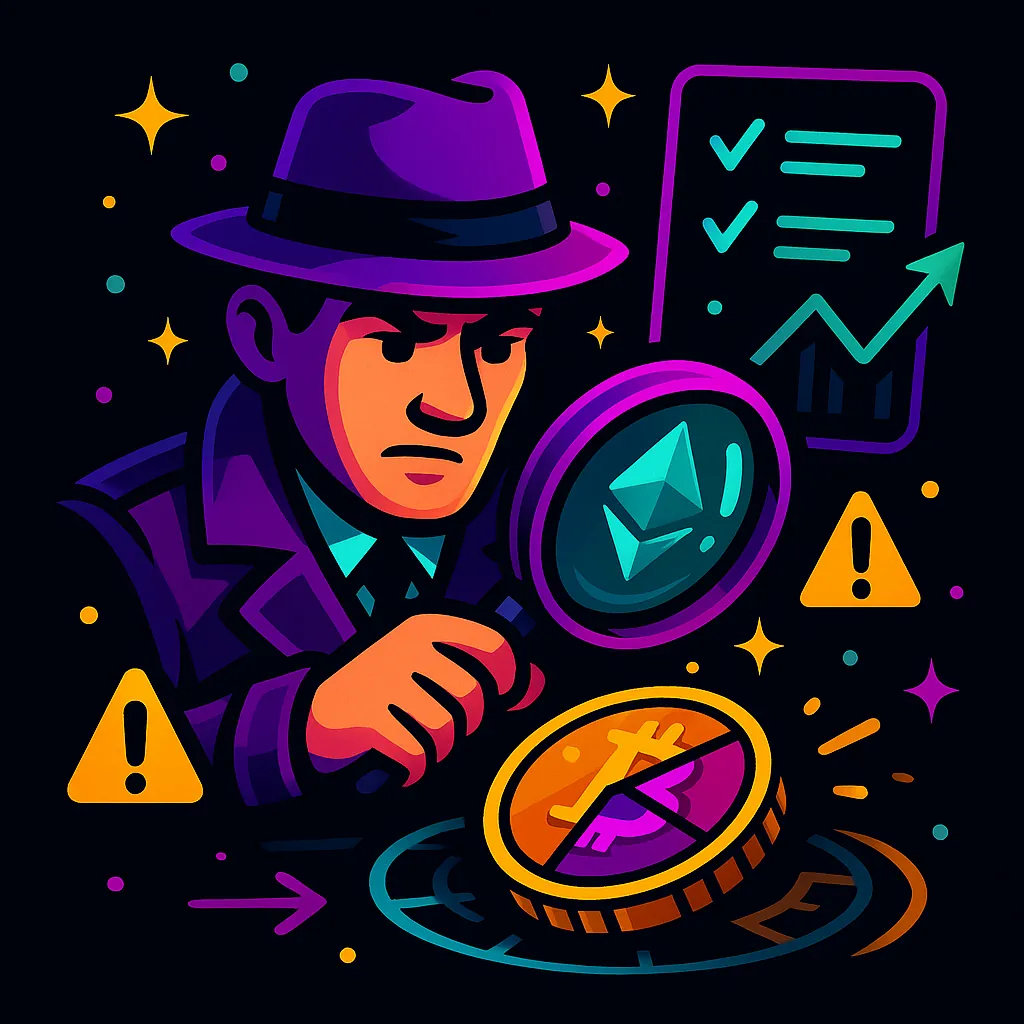If you’ve been in crypto for more than 5 minutes, you’ve seen the phrase DYOR (Do Your Own Research). It’s the culture’s way of saying: don’t just ape because your cousin, a Twitter shill, or some influencer told you to. In a market where 90% of new coins are scams or dead within a year, learning to DYOR is the difference between catching the next SOL… or getting rugged by the next FTX.
Why DYOR Matters
Crypto has insane upside, but also insane scams. In 2023 alone, Chainalysis reported over $3.8B stolen in rug pulls, hacks, and frauds. Every cycle has its horror stories — Bitconnect in 2017, Terra in 2022, FTX in 2022. The people who did proper research avoided disaster, while blind apes lost everything.
Step 1: Check the Team
- Are they anonymous or public? Anons aren’t always bad (look at Satoshi), but for DeFi projects handling billions, transparency matters.
- Do founders have a history in Web3 or startups? Or are they random Twitter accounts with no past?
- Google + LinkedIn: if you can’t find real background info, 🚩.
Step 2: Understand the Tokenomics
- How many tokens exist? What’s the circulating supply vs. max supply?
- Who controls the majority? If insiders or VCs hold 60%+, they’ll dump on retail.
- Is there utility? Staking, governance, payments — or is it just “number go up”?
- Check vesting schedules. If 80% unlocks in 6 months, expect dumps.
Step 3: Look at Liquidity & Exchanges
- Is the token listed only on sketchy DEXs with no liquidity? 🚩
- Is liquidity locked? If not, devs can pull the rug.
- Are big exchanges (Binance, Coinbase, OKX) involved, or only tiny ones?
Step 4: Audit & Security
- Has the smart contract been audited by legit firms (CertiK, Trail of Bits, Quantstamp)?
- Do they use multisig wallets for treasury?
- Any history of exploits?
Step 5: Community & Hype Check
- Is the Telegram/Discord full of bots spamming “moon soon”? 🚩
- Are people actually discussing tech and roadmap?
- Check Twitter — real engagement or fake followers?
- Strong communities (like Solana or Chainlink) usually outlast hype coins.
Step 6: Use On-Chain Tools
- Etherscan / BSCscan: check top holders — if one wallet holds 80%, that’s a whale trap.
- DeBank / Nansen: see where smart money flows.
- DEXTools: spot fake volume and sketchy liquidity.
Real-World Examples
- FTX: Tons of red flags — shady balance sheet, poor transparency, CEO playing League of Legends mid-crisis. People who DYOR’d stayed away.
- Solana: Despite early downtime FUD, it had strong VC backing, developer activity, and ecosystem growth. Degens who researched and held got rewarded in 2024 memecoin season.
- LUNA/UST: Promised 20% “risk-free” yield — DYOR would’ve shown that unsustainable ponzinomics eventually collapse.
Pro Tips for Degens
- Never invest in something you don’t understand.
- Start small. If you can’t explain how it works to a friend, don’t ape your rent money.
- Diversify — don’t put everything into one token.
- Join communities but filter the noise — hype ≠ research.
Final Thoughts: Knowledge = Survival
DYOR isn’t just a meme. It’s how you protect yourself in the wildest, most unregulated market on earth. Anyone can create a token, spin up a slick website, and shill it on Twitter. Without research, you’re just exit liquidity.
So before you ape, ask yourself: have I checked the team, tokenomics, liquidity, audits, and community? If not, you’re gambling blind. Do the work, fam. Because in crypto, the only people who survive every cycle are the ones who DYOR. Wagmi. 🚀


